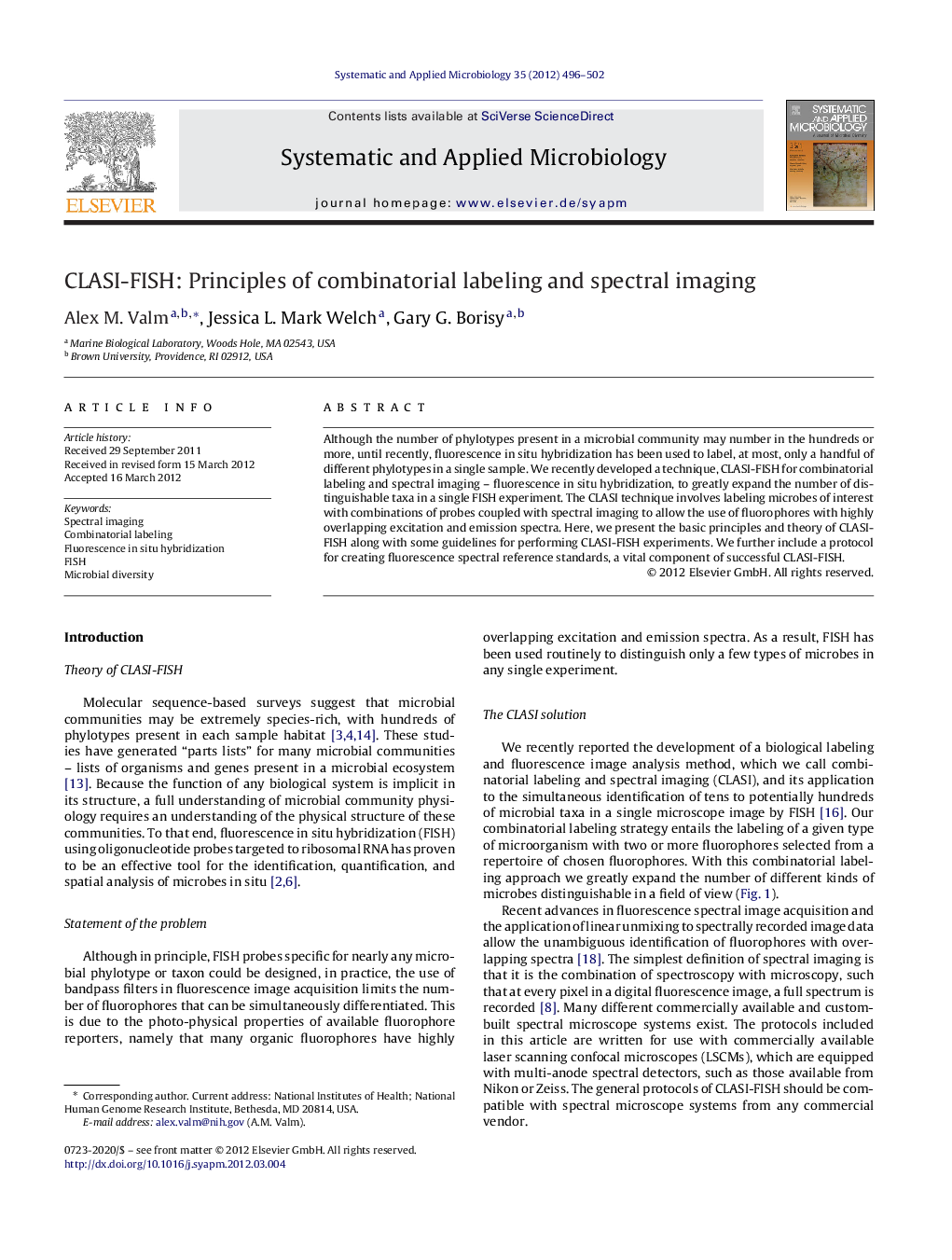| Article ID | Journal | Published Year | Pages | File Type |
|---|---|---|---|---|
| 2063808 | Systematic and Applied Microbiology | 2012 | 7 Pages |
Although the number of phylotypes present in a microbial community may number in the hundreds or more, until recently, fluorescence in situ hybridization has been used to label, at most, only a handful of different phylotypes in a single sample. We recently developed a technique, CLASI-FISH for combinatorial labeling and spectral imaging – fluorescence in situ hybridization, to greatly expand the number of distinguishable taxa in a single FISH experiment. The CLASI technique involves labeling microbes of interest with combinations of probes coupled with spectral imaging to allow the use of fluorophores with highly overlapping excitation and emission spectra. Here, we present the basic principles and theory of CLASI-FISH along with some guidelines for performing CLASI-FISH experiments. We further include a protocol for creating fluorescence spectral reference standards, a vital component of successful CLASI-FISH.
